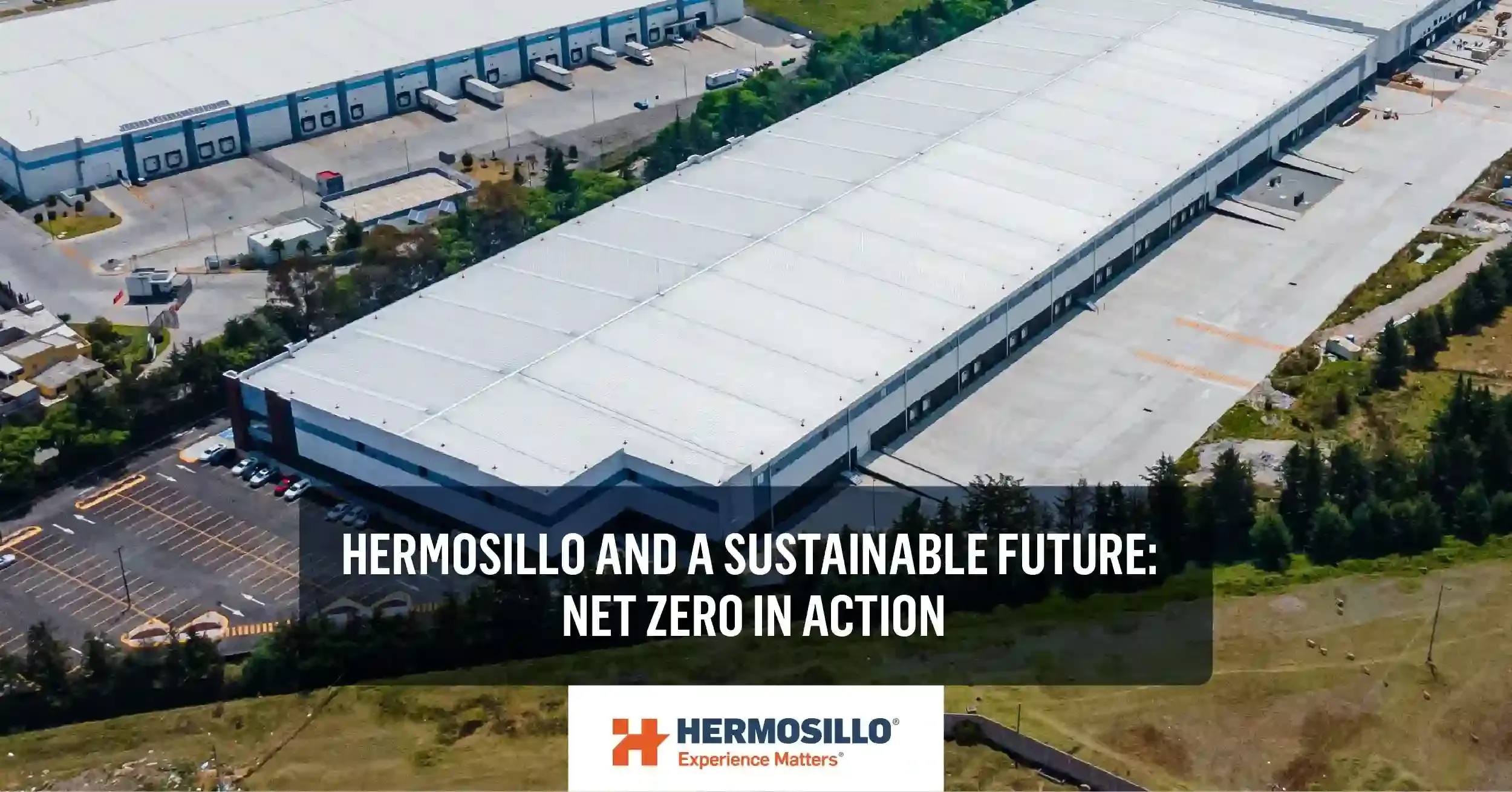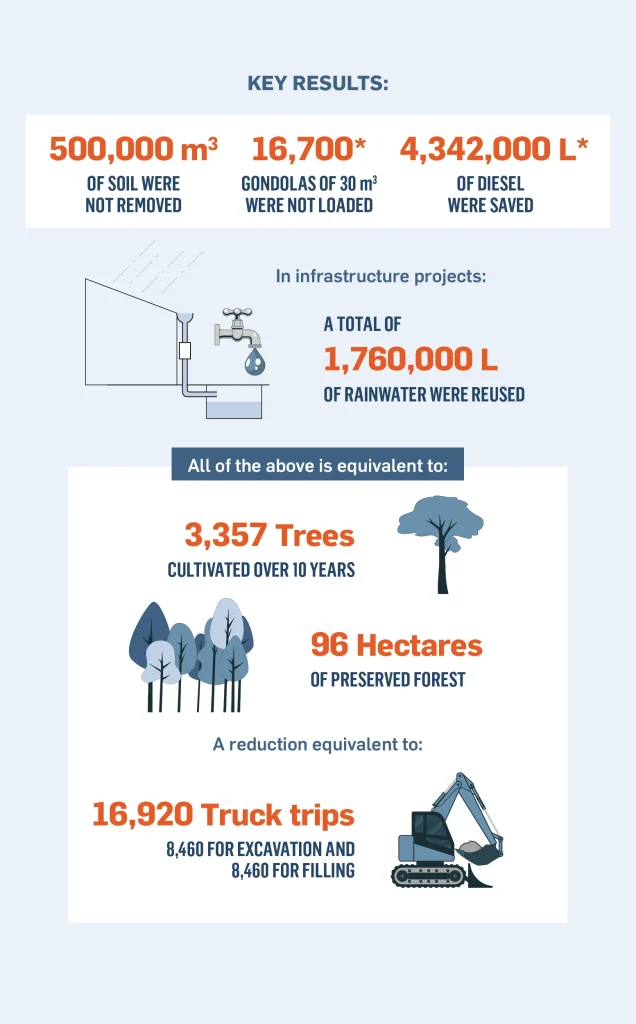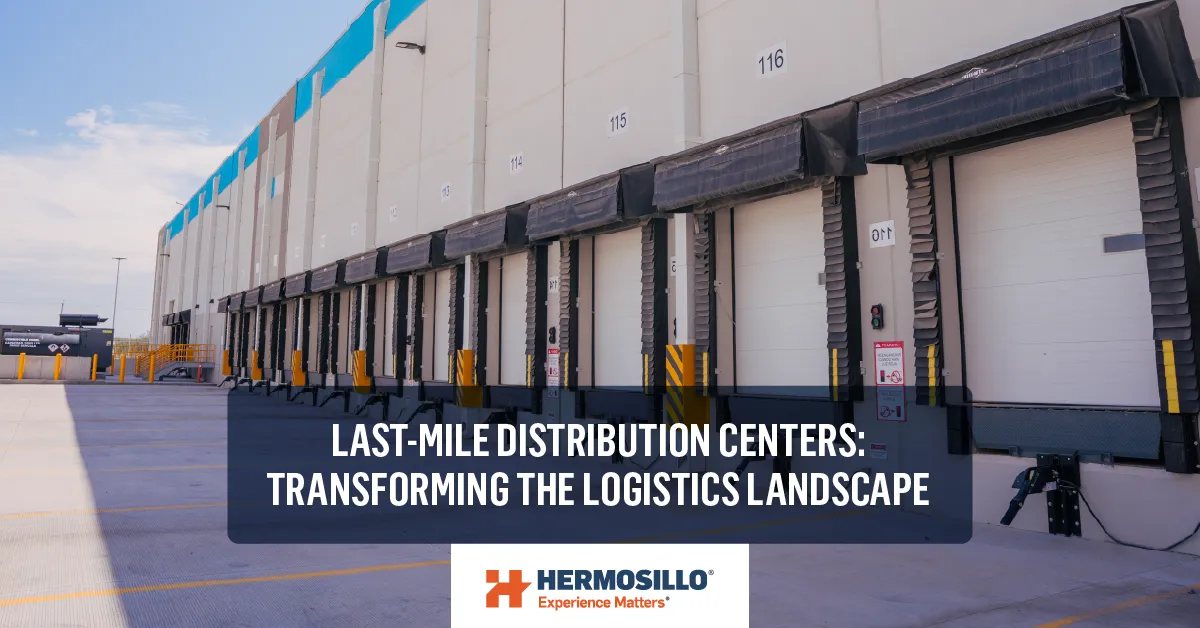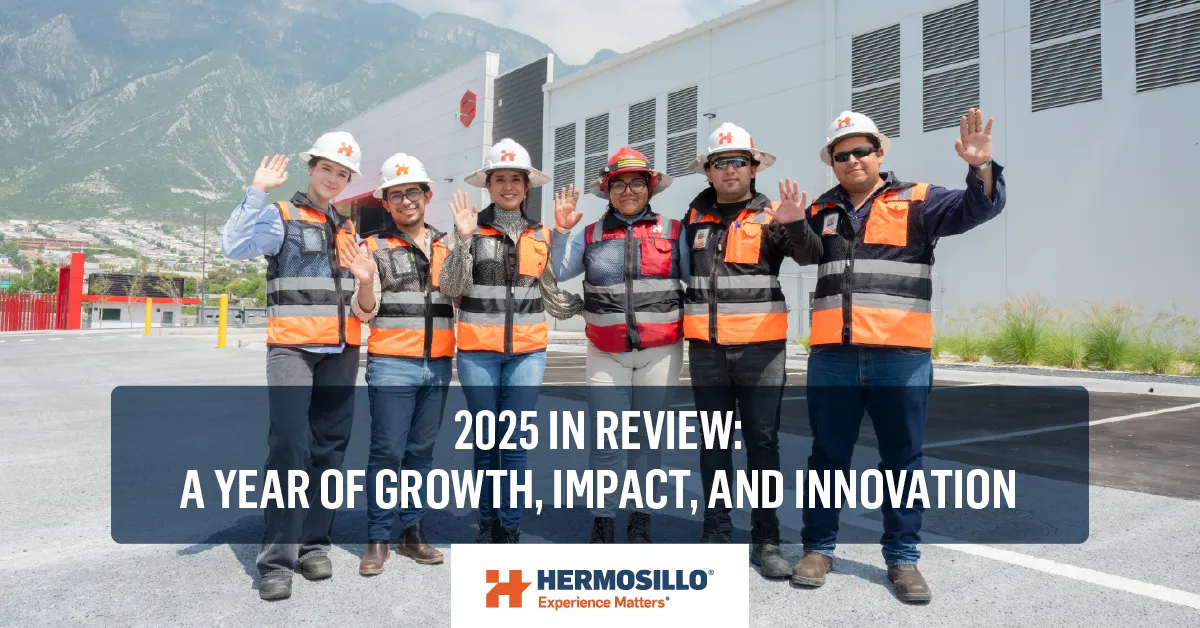
With a society increasingly aware of environmental challenges, the construction industry must adapt to sustainable practices. The concept of Net Zero aims to reduce the carbon footprint. It represents a standard that aligns with global demand, particularly in sectors where sustainability is key to ensuring future well-being.
Sustainable construction focuses on green design, eco-friendly materials, efficient processes, and advanced technologies to minimize environmental impact. This approach benefits the planet and adds value to clients, communities, and companies through energy-efficient buildings with lower greenhouse gas emissions and responsible water management
Continue reading to learn more.
WHAT IS NET ZERO?
To understand the importance of the Net Zero concept, it is essential to break down and grasp these key terms:
- Carbon footprint: Refers to greenhouse gas (GHG) emissions expressed in CO₂ equivalent units.
- Carbon emissions: These are divided into:
- Embodied carbon: Emissions associated with the manufacturing, transporting, and installing construction materials.
- Operational carbon: Emissions generated by energy consumption from various systems during a building’s operational life.
- Life cycle: This includes all stages of a building, from planning and design through construction, operation, and maintenance to demolition and final disposal.
- Life Cycle Assessment (LCA): A methodology that measures and evaluates environmental impact throughout a building’s lifecycle. Benefits include reduced environmental impact, achieving ecological certifications, and identifying areas to optimize costs.
Understanding these concepts clarifies that Net Zero refers to minimizing net GHG emissions as much as possible (nearly zero) and compensating for residual emissions through atmospheric absorption, such as by oceans and forests, as defined by the United Nations®.
Globally, this approach has become a key objective in mitigating climate change, promoting public policies, and advancing sustainable technological solutions.
HOW TO ACHIEVE NET ZERO IN CONSTRUCTION
There is no single pathway to decarbonization, but several strategies, such as reducing embodied and operational carbon, can help achieve it.
To decarbonize, measuring and reducing carbon emissions in building construction and operation is crucial. Continuous monitoring enables action toward an equilibrium where emissions are compensated or eliminated.
Several recognized certifications indicate that a building has achieved Net Zero:
- LEED® ZERO CARBON: Requires LEED® GOLD certification and 100% renewable energy.
- LEED® ZERO ENERGY: Balance between energy production and consumption.
- LEED® ZERO WATER.
- LEED® ZERO WASTE.
- BREEAM® NET ZERO CARBON: Promotes solutions to reduce carbon emissions, enhance the lifecycle, foster sustainability, and support reporting and disclosure.
- ILFI® ZERO CARBON: Focuses on embodied carbon strategies, mandatory LCAs, EPDs (Environmental Product Declarations), or low-carbon materials.
- ILFI ZERO ENERGY: 100% renewable energy.
HOW CONSTRUCTION COMPANIES CAN CONTRIBUTE TO NET ZERO GOALS
At Hermosillo, we believe in the construction industry’s potential to lead the way toward achieving Net Zero goals. While we explore various sustainable practices, we aim to share strategies that other companies in the sector can implement to reduce embodied carbon and optimize their projects. These include:
- Energy analysis: Assess and measure a project’s energy consumption, identifying areas for improvement and opportunities to reduce energy use.
- Project benchmarking: Analyze projects’ Energy Use Intensity (EUI) and compare it with industry benchmarks to ensure energy-efficient designs that align with best practices.
- Energy efficiency: Incorporate strategies to enhance building energy performance during the design phase. This maximizes the use of energy-efficient materials and systems during construction.
- Energy management: Utilize advanced technologies to manage building systems effectively, optimizing their operational use.
- Low-carbon materials: To reduce the project’s carbon footprint, select low-carbon materials available near the project site from the design phase.
- Recycled materials: To reduce dependence on virgin materials and minimize environmental impact, prioritize materials with recycled content in their manufacture.
By adopting these practices, construction companies can significantly reduce their environmental footprint and contribute to Net Zero goals. Collaboration and knowledge sharing within the industry are essential to making sustainability a shared commitment and reality.
FEATURED PROJECT WITH PRS-NEOLOY® TOUGH-CELLS
At Hermosillo, we take pride in a project that stands out for its results. Together with the client, we achieved a significant reduction in CO₂ emissions through the implementation of the PRS-Neoloy system. This innovative soil stabilization and road reinforcement technology avoided the need for transporting and handling aggregate material, reducing over 13,000 tons of CO₂ during construction—equivalent to saving more than 3,300 trees.
This reduction was calculated considering factors like transportation distances from the project to the deposit site and diesel consumption during such trips. This approach not only satisfied our client but also instilled pride in our teams.

PRS-Neoloy® Tough-Cells, made with a 3D honeycomb design of advanced polymer, offer environmental, economic, and engineering advantages compared to other soil stabilization methods. This technology significantly reduces construction time, increases durability, and minimizes maintenance, contributing to a substantial decrease in CO₂ emissions.
CONCLUSION
The focus on Net Zero is not just an environmental commitment but also an opportunity to lead the transition toward a more sustainable and efficient construction industry. All construction industry actors, including material and equipment manufacturers, clients, end users, and design and construction companies, must make this effort collectively.
At Hermosillo, we have adopted innovative practices that reduce our carbon footprint and generate positive impacts for our clients, collaborators, and the communities where we operate. These initiatives are outlined in our Greenbook, a sustainable guide directing each team member.
Our purpose goes beyond delivering projects; we aim to build a future where respect and responsibility for the environment are fundamental pillars. With over 26 LEED® certified projects and 15 more under development, we continue advancing our mission of designing and building spaces that balance sustainability and functionality.






